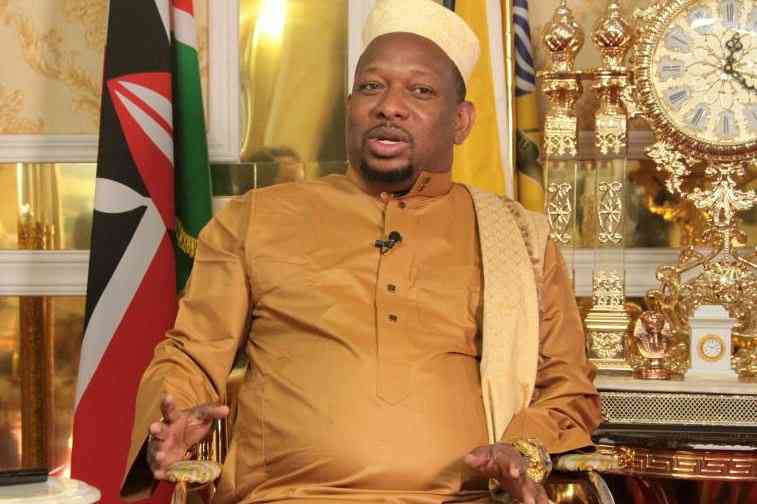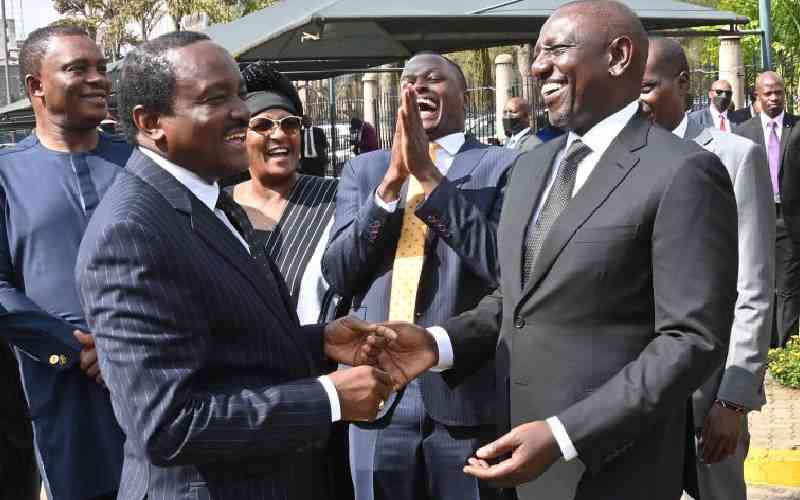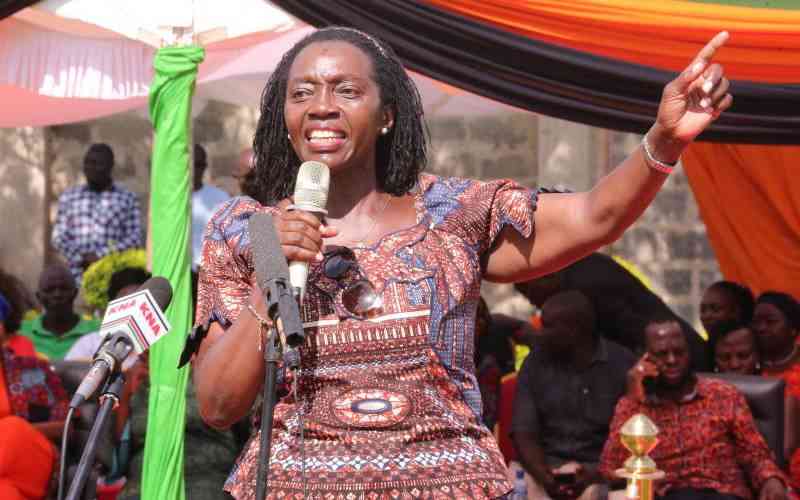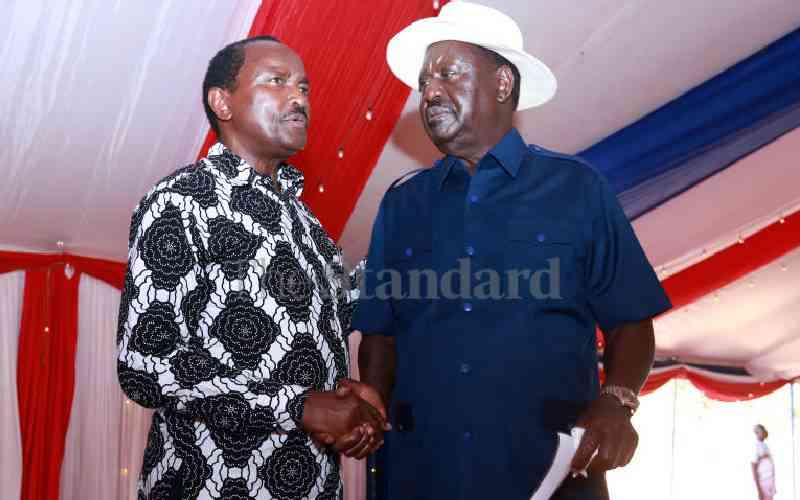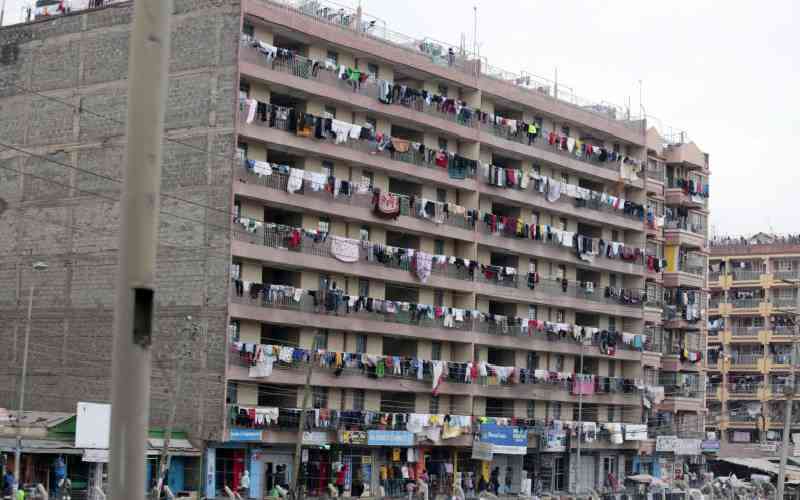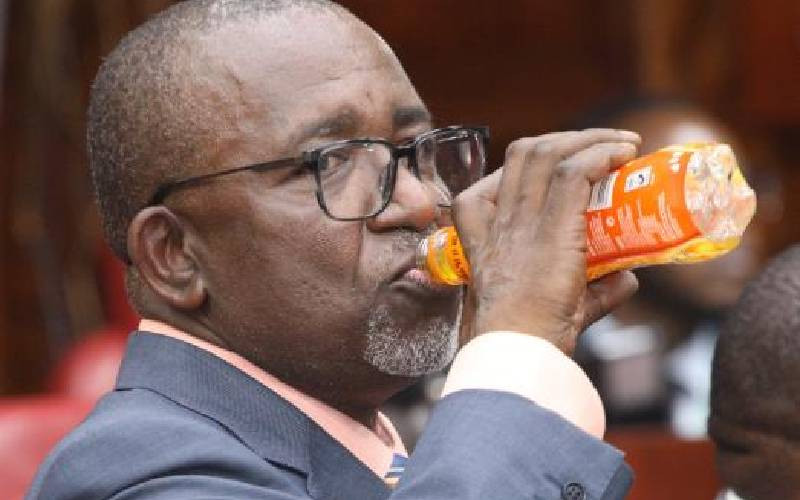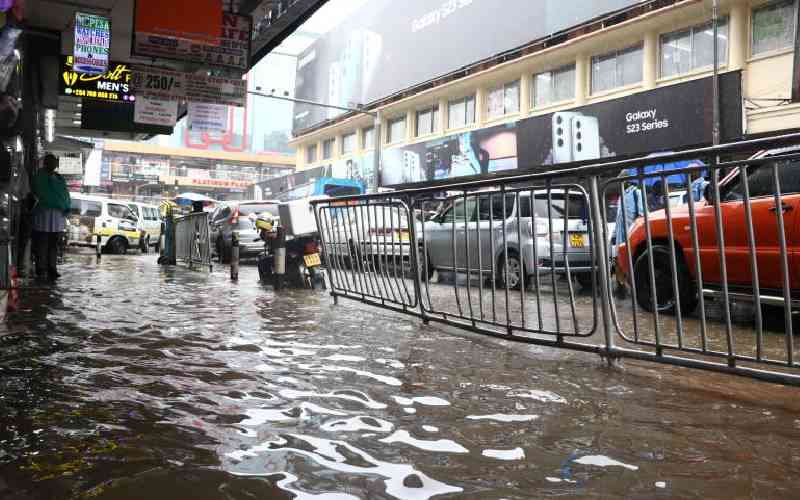By Gakuu Mathenge
The creation of People’s Democratic Movement (PDM) as the rallying point for PNU and its affiliates has potential to propel political fortunes of some of the party’s leading lights, and dim others.
 |
PNU and affiliate party members show the PDM thumb sign after the retreat at the Great Rift Valley Lodge in Naivasha. Photo: Boniface Okendo/Standard
|
Of all PNU leaders, Vice-President Kalonzo Musyoka is most anxious for PDM to fly.
For instance, he is not only the presumed heir apparent as VP but at 57, he is the eldest of the other contenders under the PDM flagship — Uhuru Kenyatta (48) and William Ruto (43).
Kalonzo is the eighth VP, and may not want to go the way of Jaramogi Oginga Odinga, Joseph Murumbi, Josephat Karanja, Kijana Wamalwa (all deceased), George Saitoti, Moody Awori and Musalia Mudavadi.
As ex-VPs, they were at one time next in line, but their ambitions remained only dreams. President Kibaki and former President Moi are the only VPs to make it to State House, albeit through different routes.
Kalonzo should be watching his stars keenly, as painful lessons of 2007 are yet to fade. Less than six months to the Election Day, he was the king of opinion polls, riding miles ahead of incumbent Kibaki and rival for ODM-Kenya ticket, Raila Odinga.
This evaporated the moment Raila joined ODM-Kenya’s presidential nomination race.
Kalonzo and Raila are today in Government, thanks to a disputed presidential vote and the 2008 post-election violence.
Like in 2007, Kalonzo is today VP and enjoys the company of Uhuru (Finance Minister) and Ruto (Agriculture).
Bagging the Kikuyu, Kalenjin and Kamba vote is a tantalising prospect for any presidential aspirant. The VP is justified to want to play leader of the KKK alliance. But 2012 is three years away, and many things could go wrong. Will PDM do the miracle that aborted in 2007?
Street dance
Kanu Organising Secretary Justin Muturi describes attempts to form PDM as "a street dance in which anyone can join and do a jig".
"Some senior civil servants are trying to intimidate and stampede others into the movement, claiming State House ordered it. We will resist intimidation," he says.
Stay informed. Subscribe to our newsletter
He warns PNU attempt to ignore the party’s key constituencies and leaders could be counter-productive.
Former minister and Africa Institute for Governance CEO Mukhisa Kituyi says PNU was created three months to election as a vehicle for President Kibaki to seek re-election.
"Kibaki was an established brand, easy to sell. This time round, PNU has neither grassroots networks nor an established brand to sell. For PNU to retreat into some board room, share positions and expect Kenyans to buy that is against the laws of political gravity," Kituyi says.
But PNU consultant Peter Kagwanja says PDM is necessary to replace the loose PNU arrangement.
"Parties will have time to study and consult before they sign the PDM charter," says Prof Kagwanja.
Whether Kalonzo rides on PDM into 2012 depends on several factors: If others will embrace him as their leader, how quickly he moves to consolidate his position, whether he will marshal enough resources to mount a serious presidential campaign and the (mis)fortunes of ODM and its leader Raila Odinga.
One man the VP must watch closely is Uhuru. For close to a year, the Finance minister set up a secretariat outside Kanu’s formal structures, and which has employed five fulltime co-ordinators in every constituency.
According to sources, the job of the coordinators is to recruit 100 Kanu delegates in every polling station.
There were 2,700 polling stations in the last General Election.
Question is: Is Uhuru doing all this for Kalonzo or himself?
 The Standard Group Plc is a
multi-media organization with investments in media platforms spanning newspaper
print operations, television, radio broadcasting, digital and online services. The
Standard Group is recognized as a leading multi-media house in Kenya with a key
influence in matters of national and international interest.
The Standard Group Plc is a
multi-media organization with investments in media platforms spanning newspaper
print operations, television, radio broadcasting, digital and online services. The
Standard Group is recognized as a leading multi-media house in Kenya with a key
influence in matters of national and international interest.
 The Standard Group Plc is a
multi-media organization with investments in media platforms spanning newspaper
print operations, television, radio broadcasting, digital and online services. The
Standard Group is recognized as a leading multi-media house in Kenya with a key
influence in matters of national and international interest.
The Standard Group Plc is a
multi-media organization with investments in media platforms spanning newspaper
print operations, television, radio broadcasting, digital and online services. The
Standard Group is recognized as a leading multi-media house in Kenya with a key
influence in matters of national and international interest.


